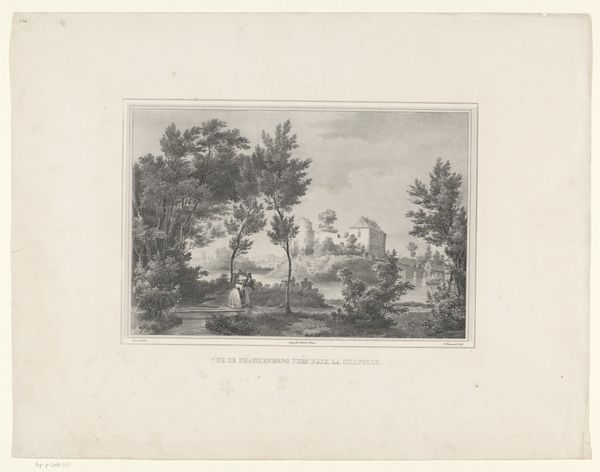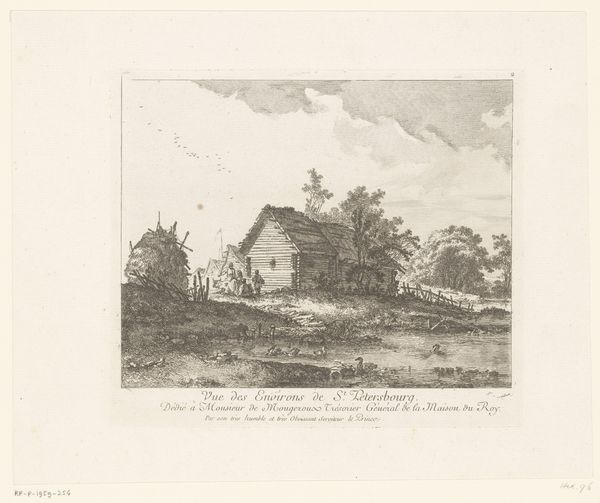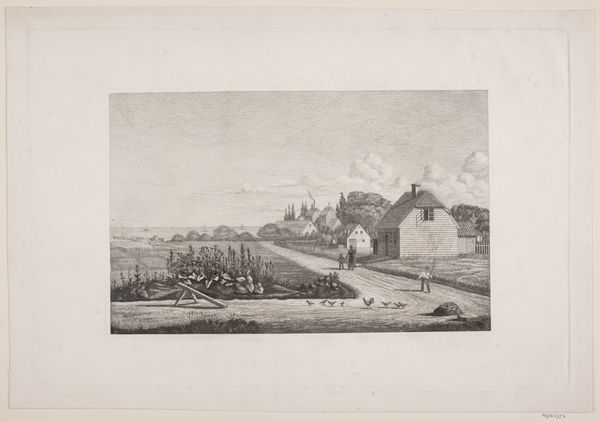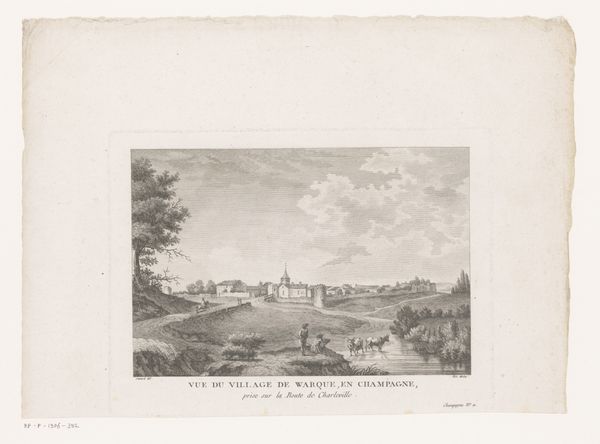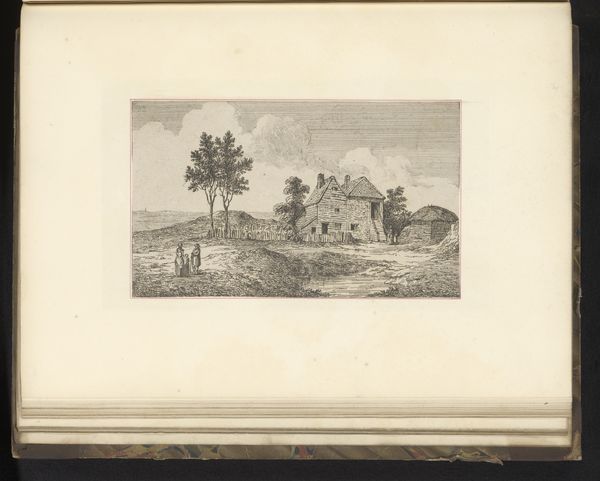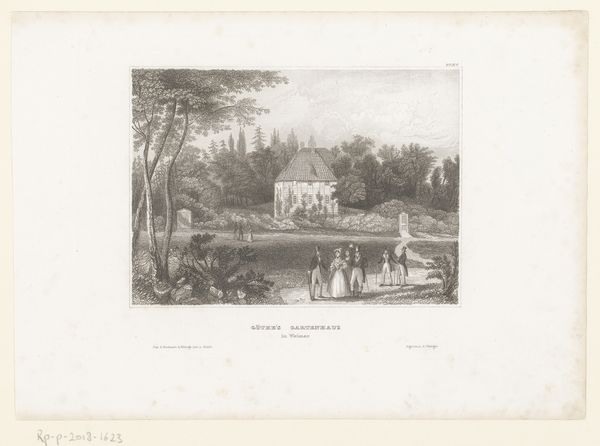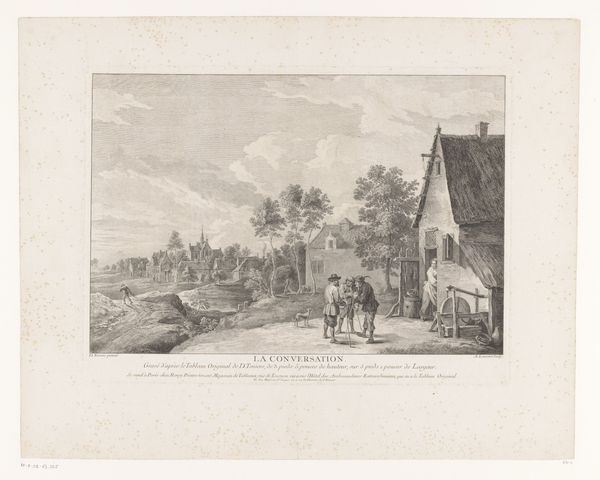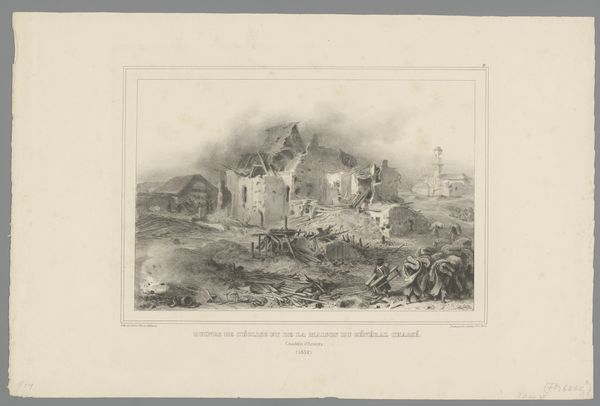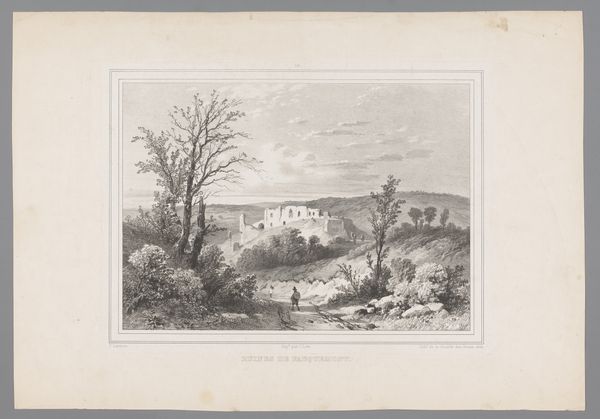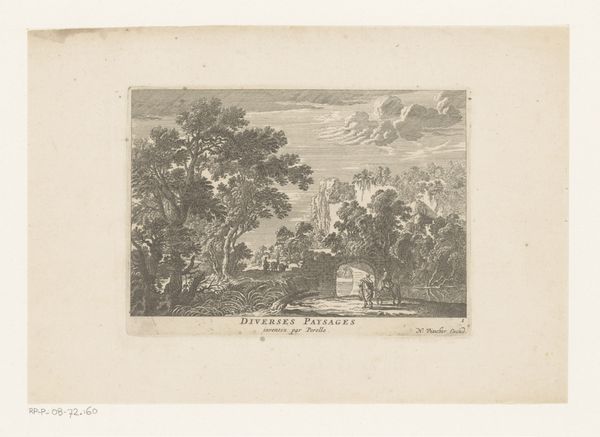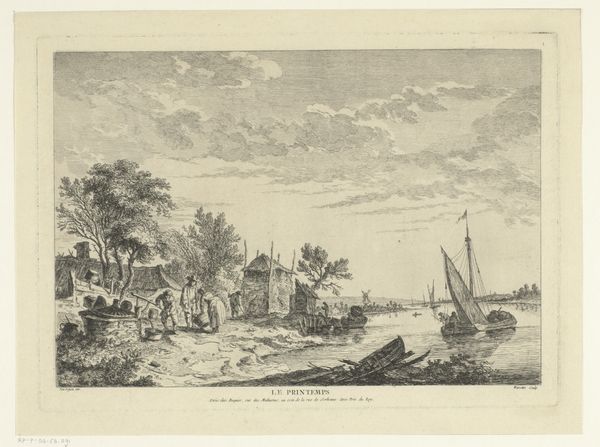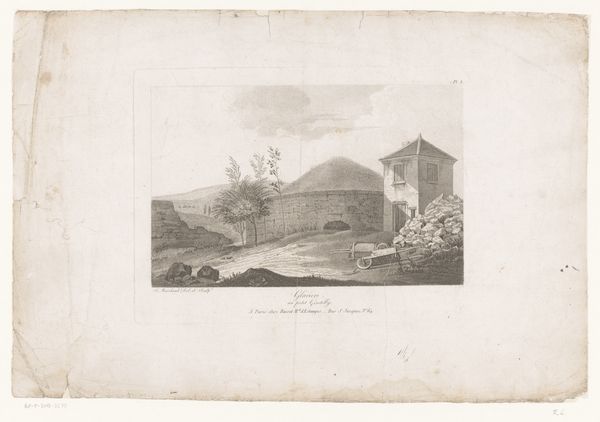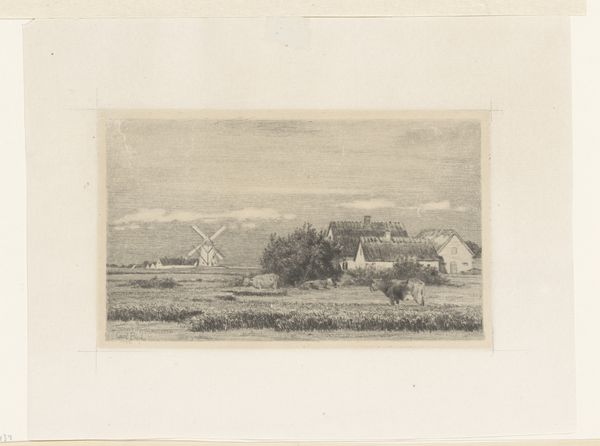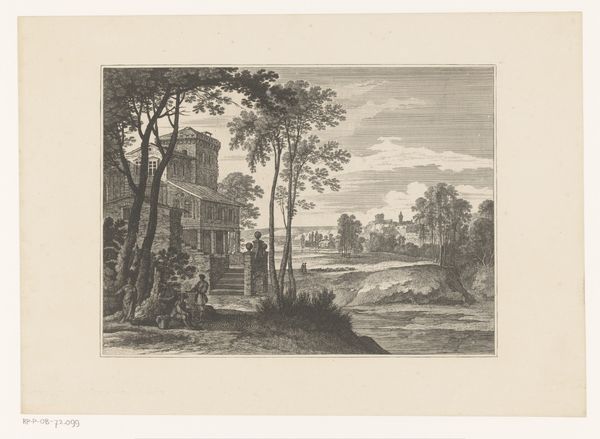
print, etching, paper
#
baroque
# print
#
etching
#
landscape
#
paper
#
horse
#
genre-painting
Dimensions: height 267 mm, width 326 mm
Copyright: Rijks Museum: Open Domain
Editor: So, here we have "Rural House with Drinking Animals and Washing Women" by Louis Jacob, made between 1726 and 1729. It's an etching on paper and it gives off a really calm, pastoral vibe. I’m curious, what's your interpretation of this piece? Curator: The tranquility you perceive is carefully constructed. Jacob offers a seemingly idyllic view of rural life, but we must consider it through the lens of social structures of the 18th century. Note the labor being performed, especially by the women. How do you think this image reflects or perhaps obscures the realities of their lives, their access to resources, and their social standing at the time? Editor: That's a good point. The women washing do seem placed outside the comforting domestic scene. Was that a common artistic choice, to separate women's labor like that? Curator: Exactly. These depictions, while seemingly benign, often served to reinforce specific gender roles and expectations. We should ask, whose story is being prioritized here? Who benefits from this idealized view? Are marginalized voices recognized in this picturesque artwork, and what elements do you consider support those experiences or further obscure the realities they endured? Editor: I see what you mean. The scene presents the wealthy residents, while women, relegated to perform daily duties, seem as commonplace as the animals that need hydrating. Now, I wonder, were pieces like these intended to reflect the world accurately or, perhaps, create aspiration in rising middle-class households of that era? Curator: It’s that tension between reality and representation that's crucial to understanding its historical context and what makes this a vital piece for intersectional dialogue, isn't it? These images could've easily affirmed existing power structures while inadvertently sparking subversive thinking. Editor: This totally reframes how I see it! What seemed like a simple landscape now has much deeper social implications. Curator: Precisely! Questioning the narratives that artworks present and understanding their place in historical power dynamics enriches our experience.
Comments
No comments
Be the first to comment and join the conversation on the ultimate creative platform.
